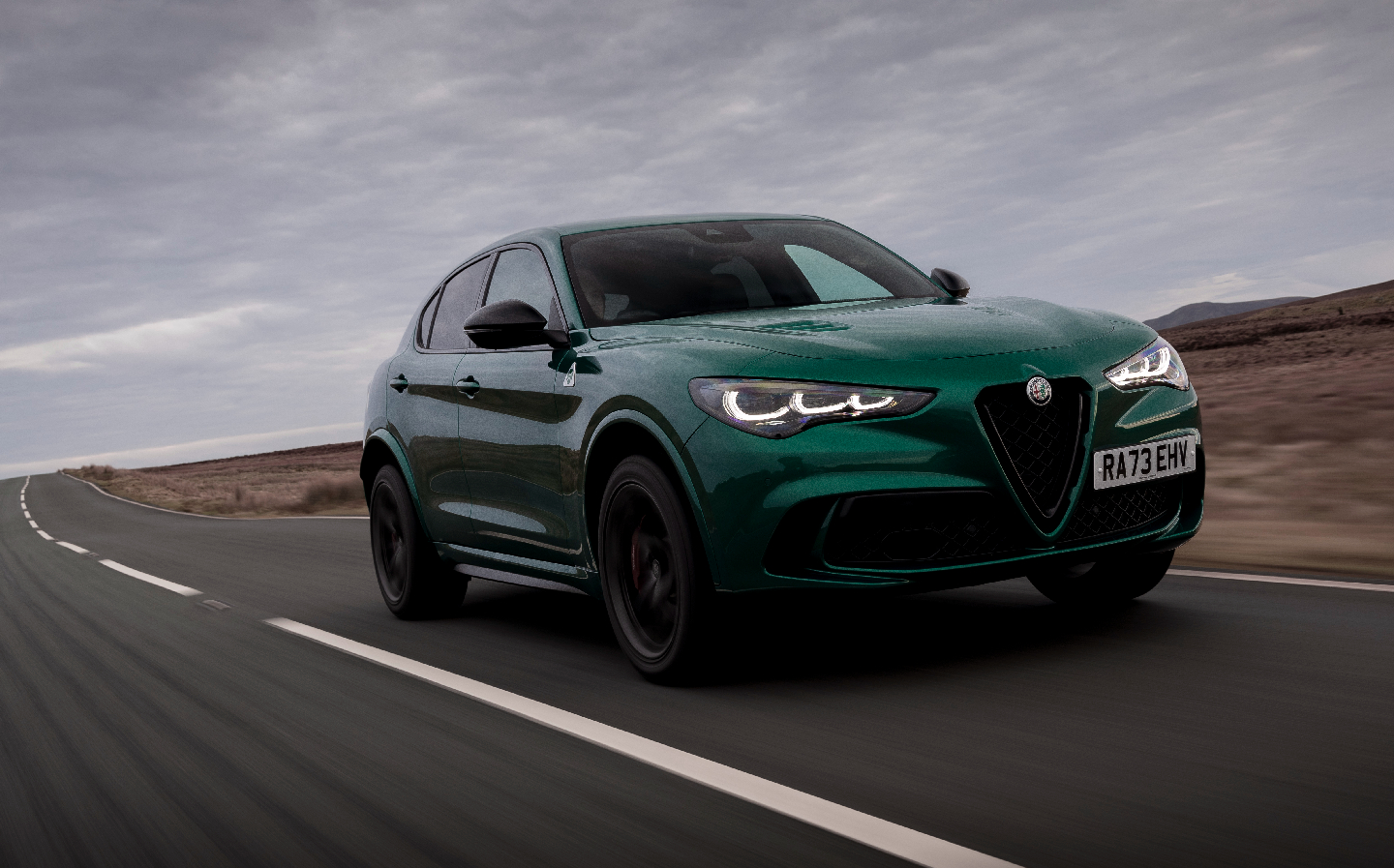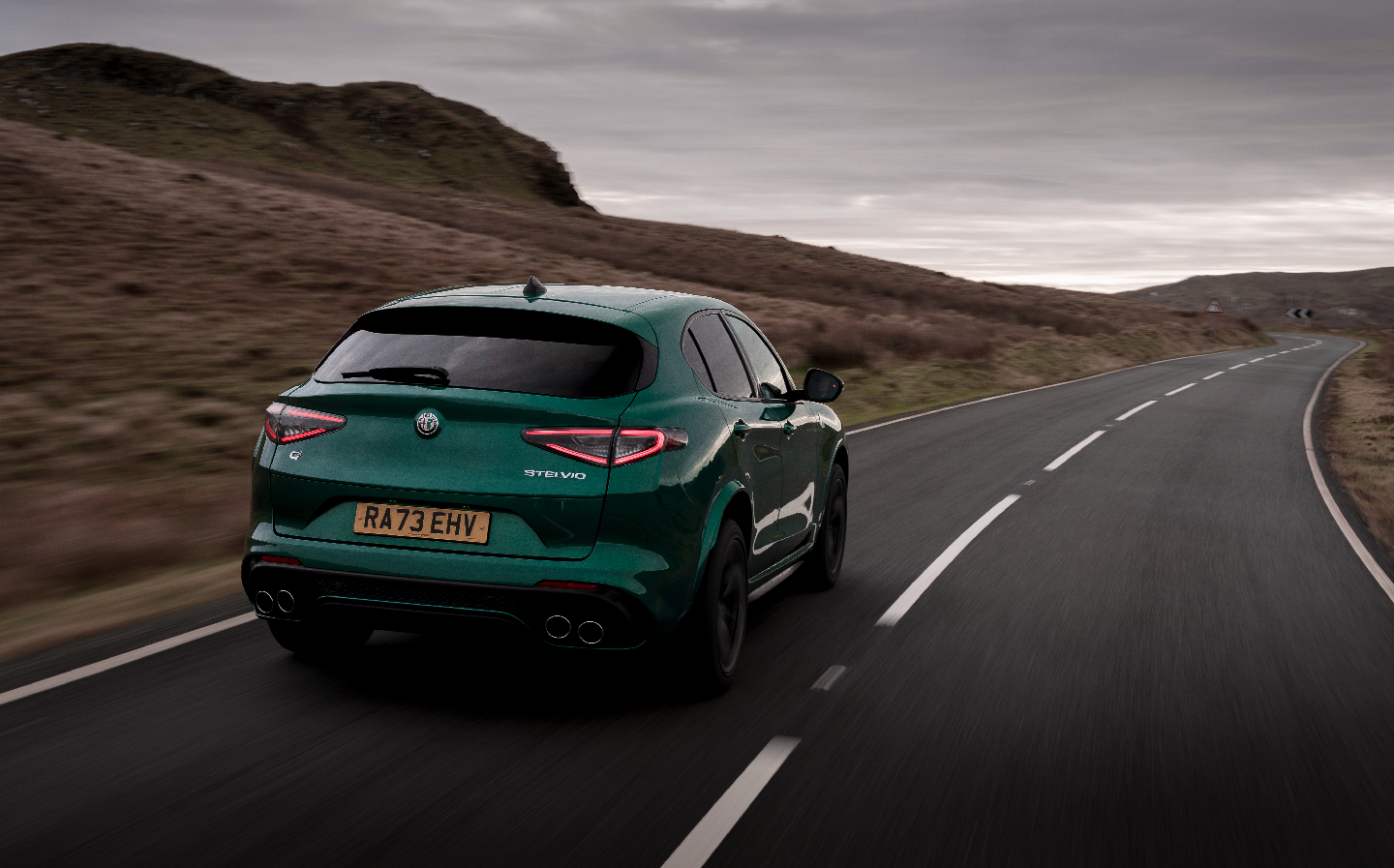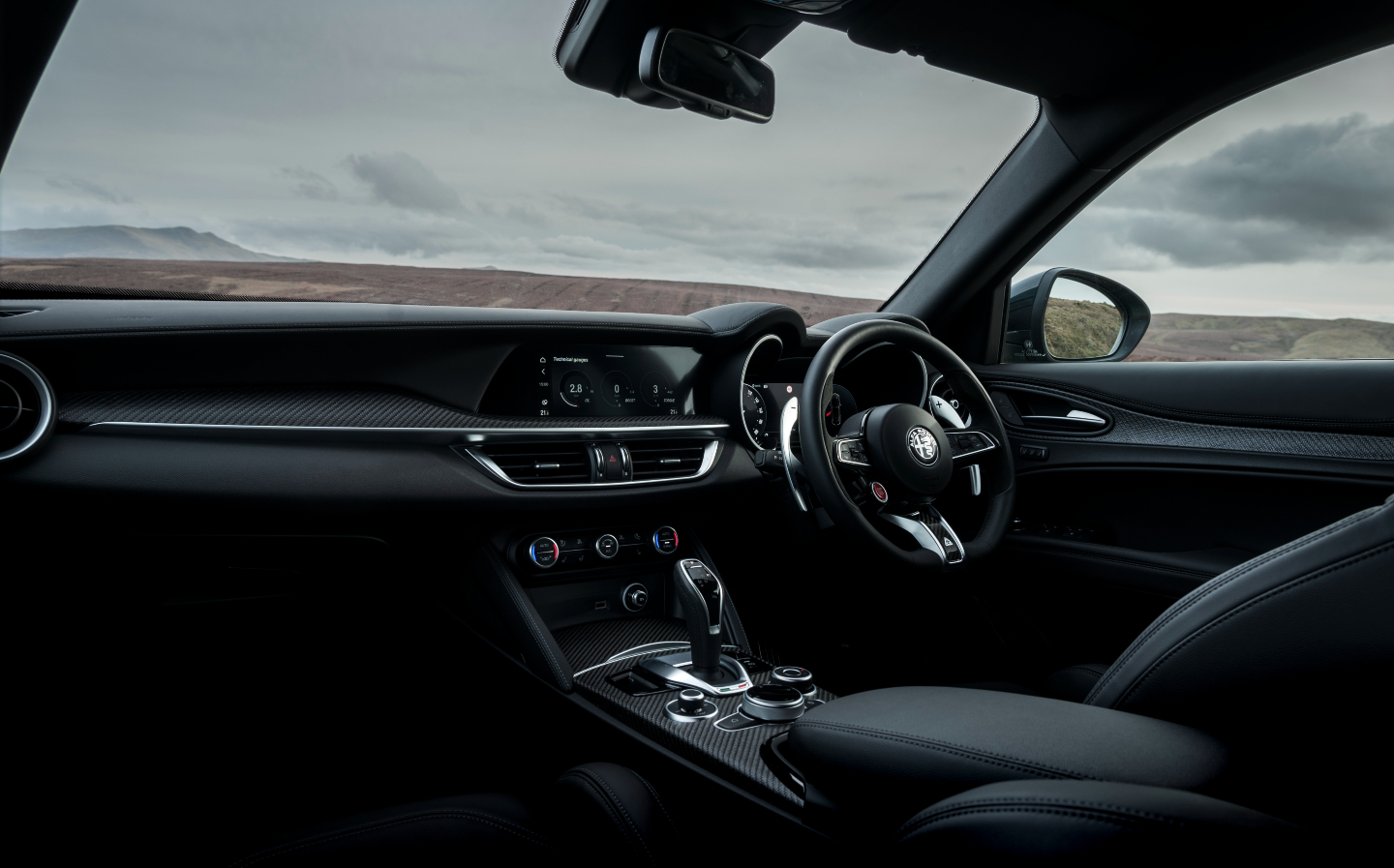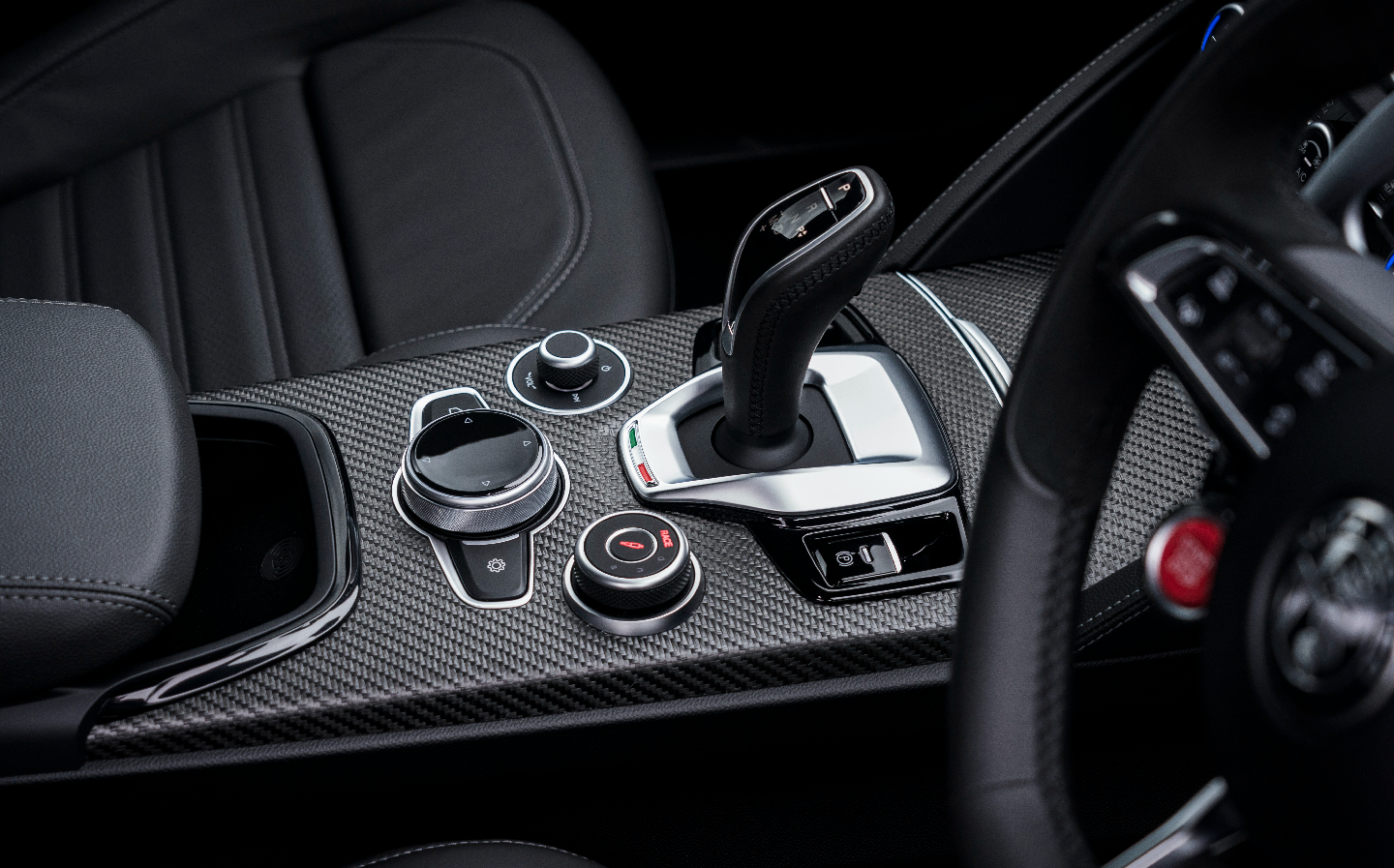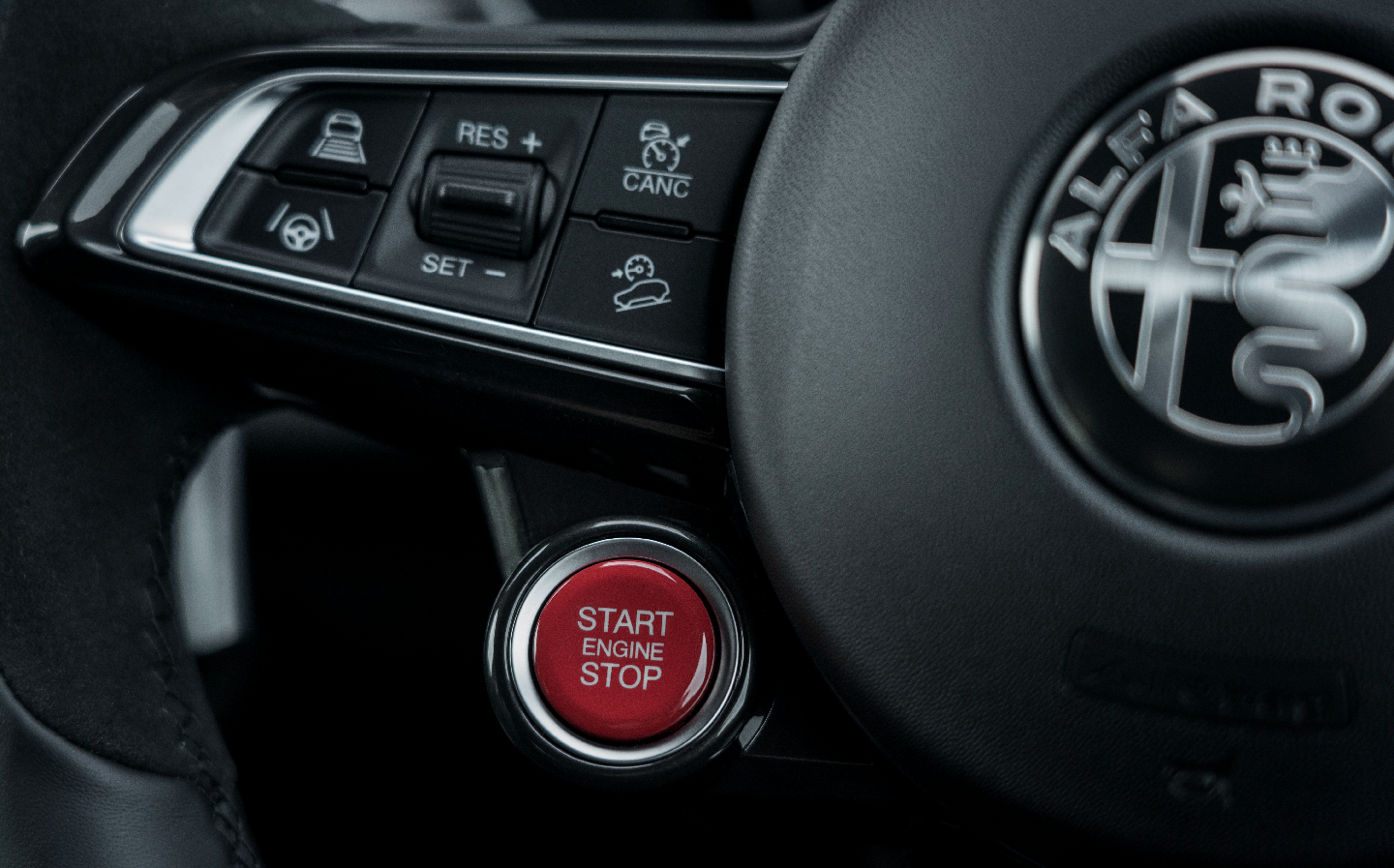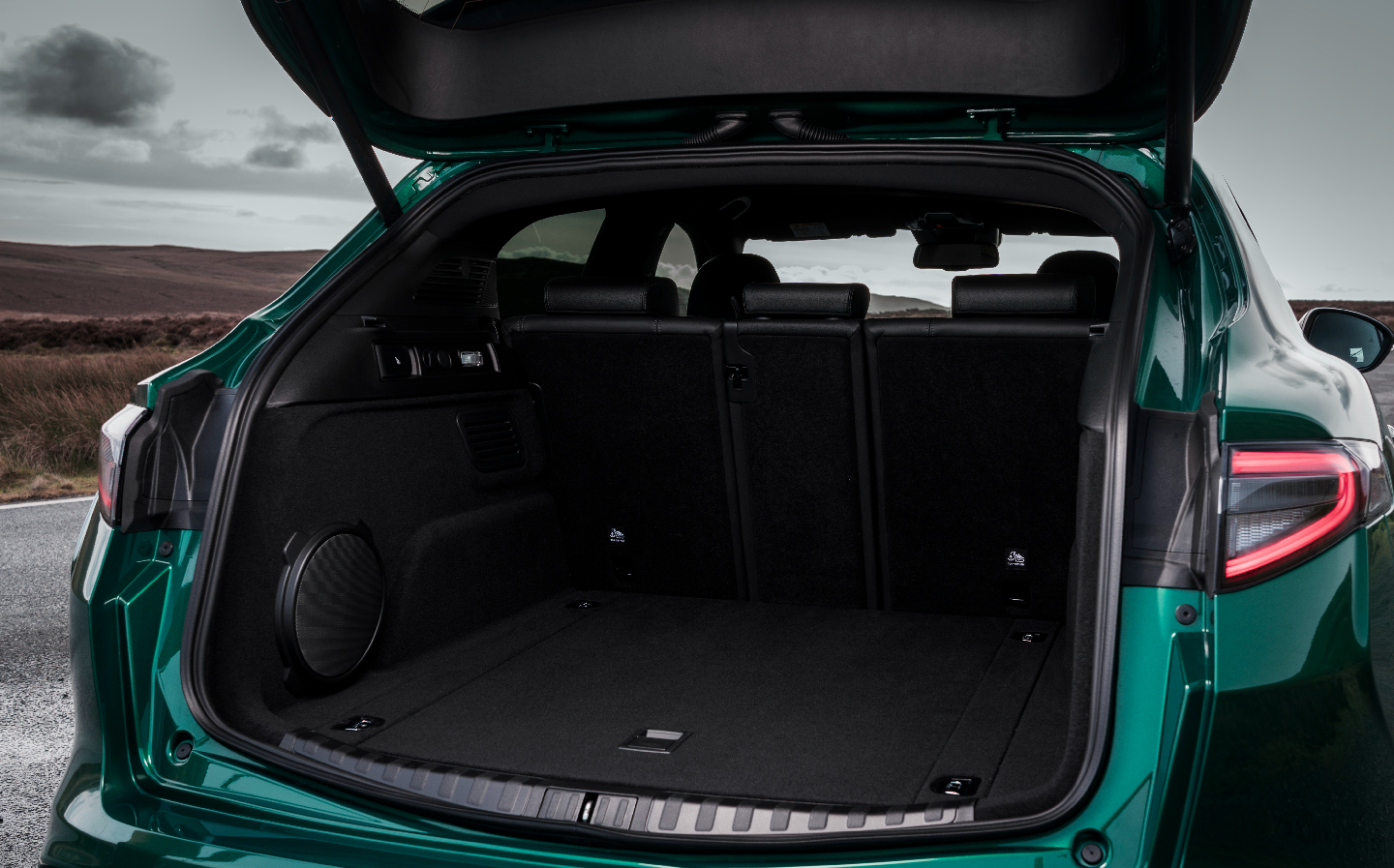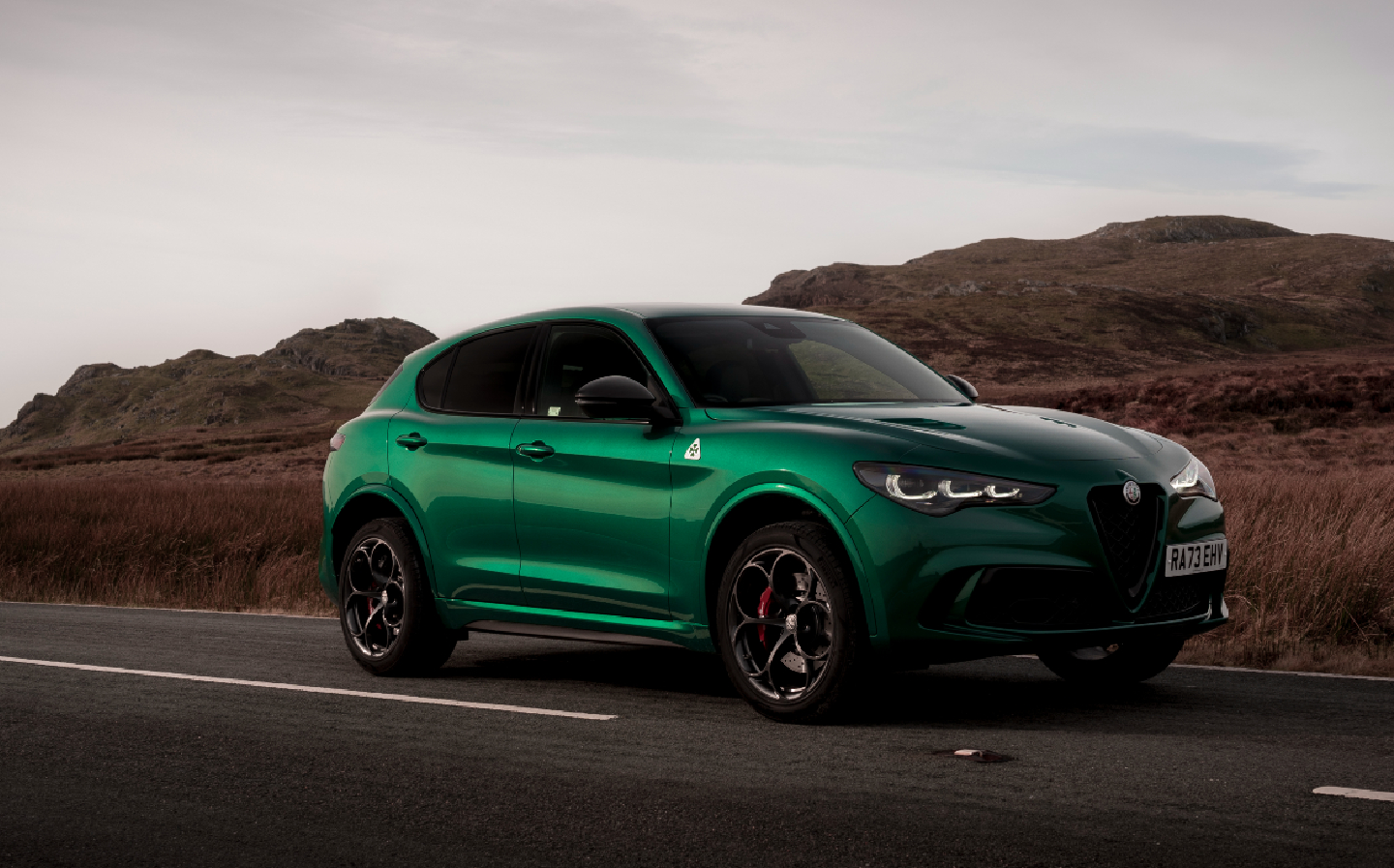Alfa Romeo Stelvio Quadrifoglio review 2024: Italian performance SUV comes good
What a re-leaf
Alfa Romeo has been trying hard to regain its spark in recent years, and its line-up of hot “Quadrifoglio” (four leaf) sports variants are a key part of that push. The brand, its UK boss was at pains to remind us at the launch of the updated Giulia and Stelvio Quadrifoglio, is steeped in motorsport history dating back to 1911 — one year after the company was founded. Performance should be as intrinsically-linked to Alfa Romeo as pasta and wild gesticulating is to Italy.
The problem has been that German rivals have often comprehensively outgunned Alfa’s efforts. The Giulia QV, as its known for short, garnered mixed reviews when it launched, but most critics agreed that it was a gorgeous-looking saloon with a lovely engine and excellent chassis, let down in a few areas.
The chief problem was a fancy electronic limited-slip differential — used to distribute torque from the engine to the wheels — that proved as unpredictable as an American bully dog. As one of the UK’s most respected motoring journalists put it to me, around a track you could find the car doing one thing around a corner on one lap and then something completely different on the next revolution. In other words, there was always the sense that at some point it was going to bite your head off.
It was a similar story with the Stelvio QV, as it’s based on the same components, though with jacked up suspension and four-wheel drive, which helped quite a bit with ironing out the suck-it-and-see nature of the power delivery. But as it favours sending power to the rear wheels, with the front wheels being fed only when the rear starts to lose grip, it was still a little more unhinged that it ought to have been.
Of course, this spiciness meant that The Sunday Times’ own Jeremy Clarkson — who is no fan of SUVs — loved the old Stelvio QV, drawing particular attention to its Ferrari-developed 2.9-litre V6 engine and tail-happy driving character. It was the SUV you should buy but won’t, he reckoned.
Maybe now’s the time, though, because Alfa has listened to the criticisms about both cars and, well, let’s not beat around the bush — fixed them.
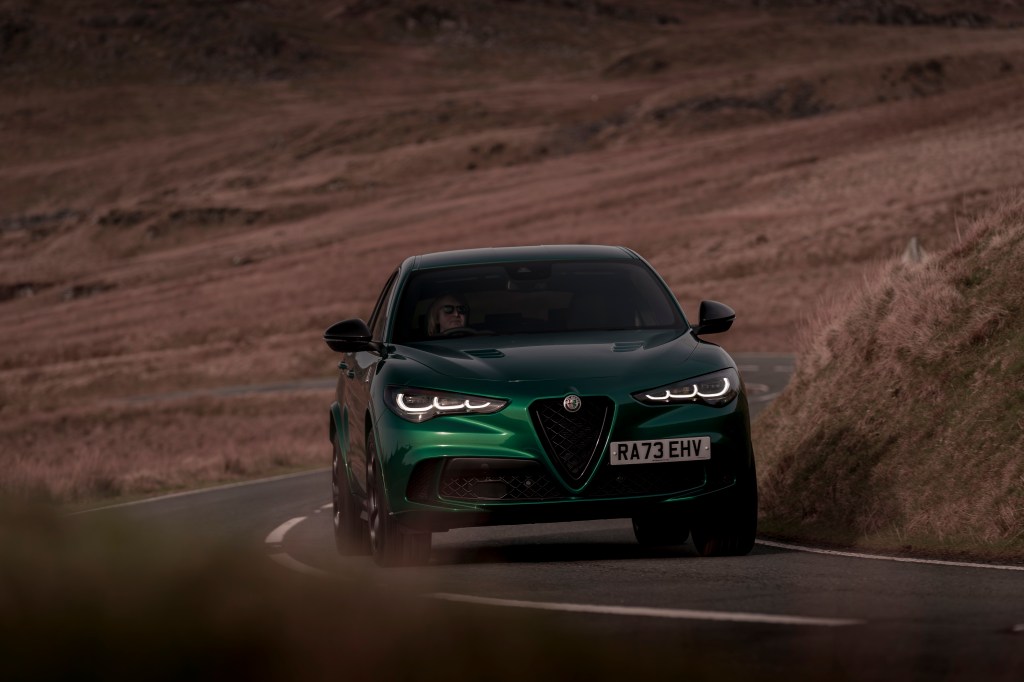
The electronic differential has been humanely destroyed and replaced with a mechanical version, which transforms the predictability of the cornering. Around a short, tight test track I was encouraged to try a lap in the “Natural” drive mode, which includes all the safety aids and stability control, before dialling it up to “Dynamic” and then “Race”, which incrementally take away the nannying electronic systems and allow you to experience the raw character of the car. Then, when you plant your foot on the exit of a slow corner, there’s a consistent, natural feel to the power delivery, and more adventurous drivers will relish the Stelvio QV’s newfound predictability.
In the dry it’s still mightily grippy thanks to the sticky Pirelli P Zero tyres (to fit 20in and 21in rims) and four-wheel drive — you have to treat the car roughly to get it to step out behind you. No doubt in the wet it’s much easier to get out of shape, though that more granular feel and the extra pulling power at the nose means that it’s less wild than the new Giulia QV, which also gets the mechanical diff and shares the same 512bhp, 2.9-litre V6 engine but is lower, lighter (by 180kg) and rear-wheel drive.
Having tried both cars back-to-back on track, it’s the Stelvio QV that inspires more confidence, especially if you’re not quite at Fangio levels of wheelmanship. It’s also a tiny bit quicker from 0 to 62mph: 3.8sec instead of 3.9sec, though golf course bragging rights swing the other way when it comes to top speed, as the Stelvio QV tops out at 177mph while the Giulia QV can reach a giddy 191mph.
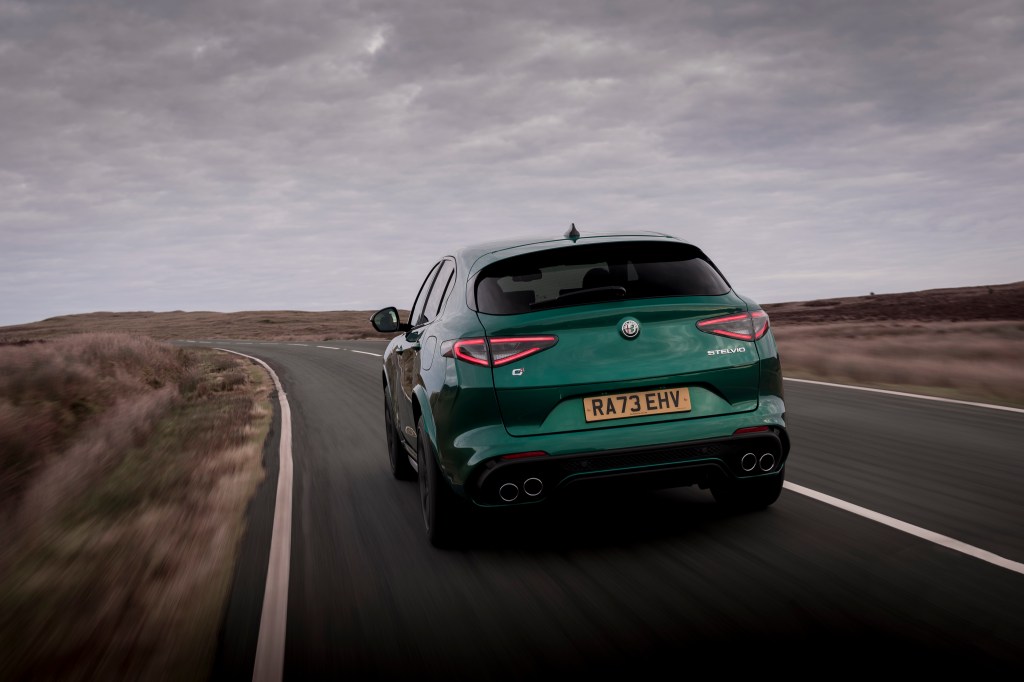
Out on the road, many owners will switch straight into Dynamic mode in most circumstances, no doubt, as it sharpens up the steering, suspension and throttle response, but Alfa gives you the option to switch back to the softer damper setting via a press of the suspension button in the centre of the selector dial. Doing so still results in fairly juddery ride on an uneven surface — which is basically all road surfaces in the UK these days — but it’s not unpleasant by any means and it’s most definitely the setting you’ll want at motorway speeds, as it makes a big difference to refinement.
You also find that the transmission is quite lively and jerky in dynamic mode, and the throttle response is quite punchy. But remind yourself that you’re in a sports SUV, not one focused on ultimate luxury, and it’s more than acceptable. Importantly, the Stelvio QV also feels rapid, and flicking through the gears with the large aluminium paddles, which are fixed to the steering column rather than the wheel, is delightfully engaging.
Still, the fact that the V6 engine will save fuel and cut emissions by shutting down one bank of cylinders when in “A” mode (for Advanced Efficiency, we were told) and not under stress, such as cruising on a steady throttle, shows this car does have two sides to its nature. If you’re wondering about fuel economy, the official figure over a mix of roads is 23.9mpg, though on a motorway you might average around 25mpg. I saw an average of 20.1mpg but was pushing it a bit.
It’s pretty plush inside, with black leather trim as standard or an optional sports upgrade that adds Alcantara, carbon-fibre panels (with reduced lacquer to allow you to feel the weave texture) here and there, and carbon Sparco sports seats.
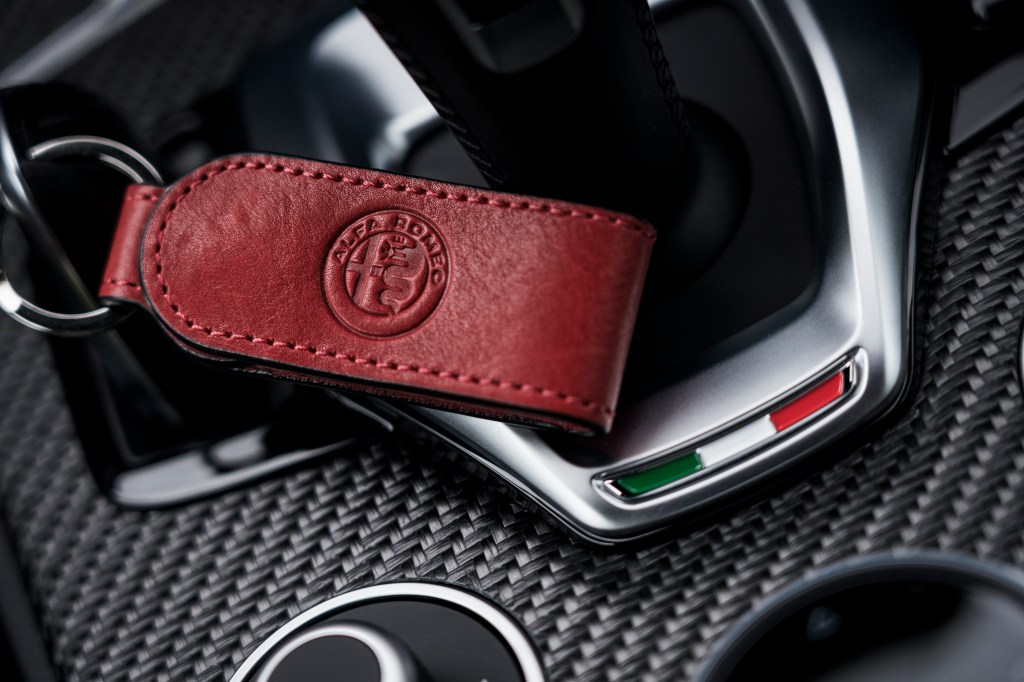
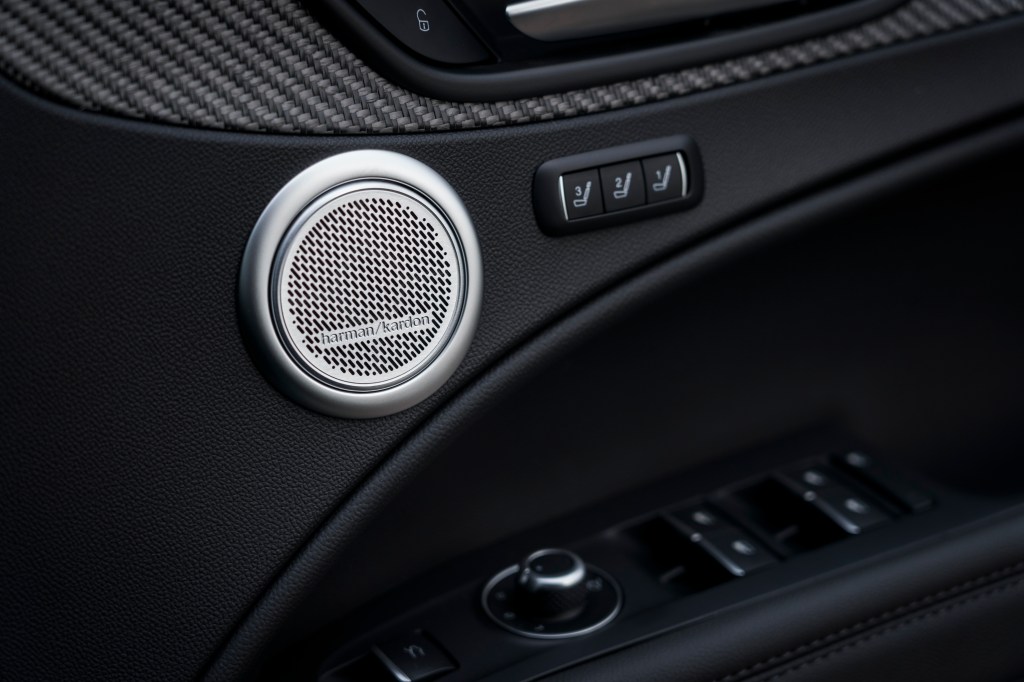
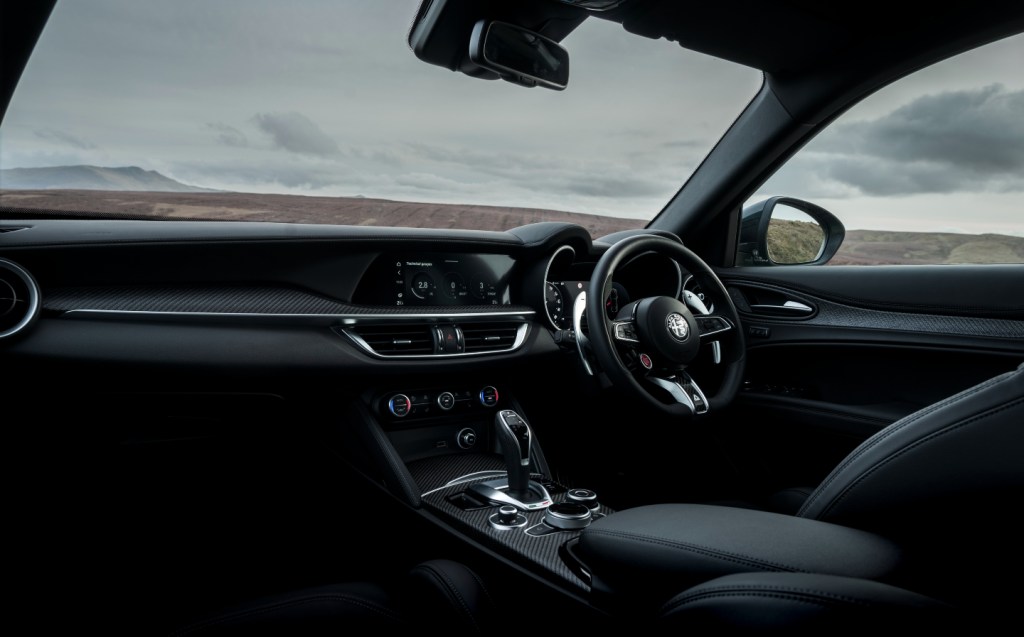
The seats proved quite snug around my hips but I’m a giant of a man, and for most normally-sized humans they will feel beautifully supportive. Perhaps the leather’s slightly baggy in some places on the seats at the top of the side bolsters, but generally the quality of everything feels excellent, and the stitching is beautifully done. It feels like a quality car.
Looked at as a whole, the cabin is either rather old-fashioned or delightfully traditional, depending on your perspective. Because yes, there’s a central touchscreen infotainment system that will run Android Auto and Apple CarPlay wirelessly, but at 8.8in in size it doesn’t dominate the dashboard in the way those in many of the latest cars do, and it can also be controlled via a BMW-style dial controller in the centre console.
And while the likes of Tesla, VW Group, Mini and Volvo are stripping away drivers’ instrument panels and moving everything to the central screen, Alfa gives extra prominence to the 12.3in digital instrument display behind the steering wheel. There are also physical controls for the air conditioning, indicators, wipers, cruise control, etc. and a clever slot for your phone between the cupholders. The Stelvio’s interior is a triumph of practicality in many ways.
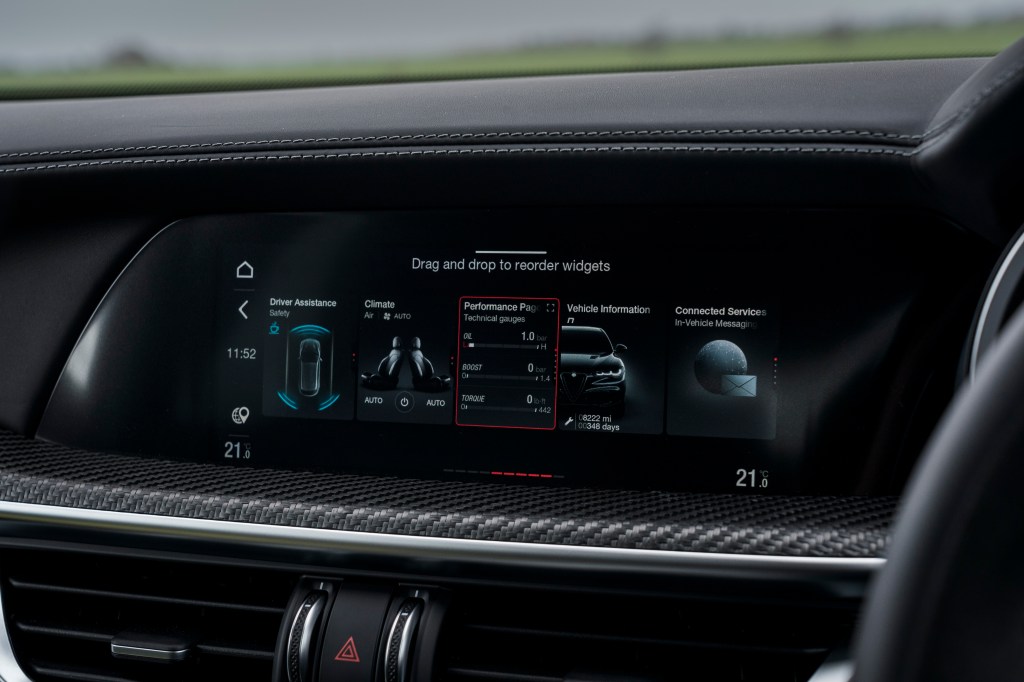
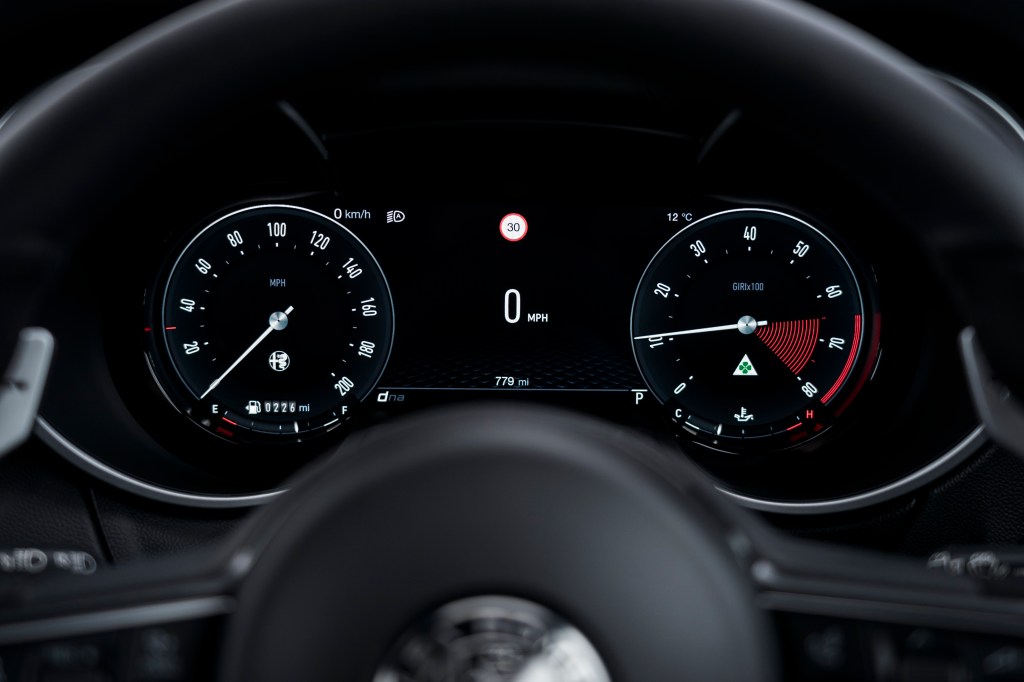

The mirrors are another sign that Alfa has resisted following ultra-modern rivals on design. There’s quite a significant plastic cowl around them, while some newer cars are being given frameless mirrors (or even cameras) both inside and out. The door mirrors are quite large, in fact, which results in a significant amount of wind noise at speed but does mean excellent visibility out of the sides. If you need to tow anything, this is probably the fastest and best way to do it.
And resisting advanced tech is probably a good thing, as when Alfa Romeo is forced to add such features it doesn’t always go well. One thing this car gets wrong all the time is the automatic speed recognition; on a 60mph national speed limit single carriageway the Stelvio was telling me I could do 70mph, and a lot of the time in a 50mph and it would say 40mph or 60mph.
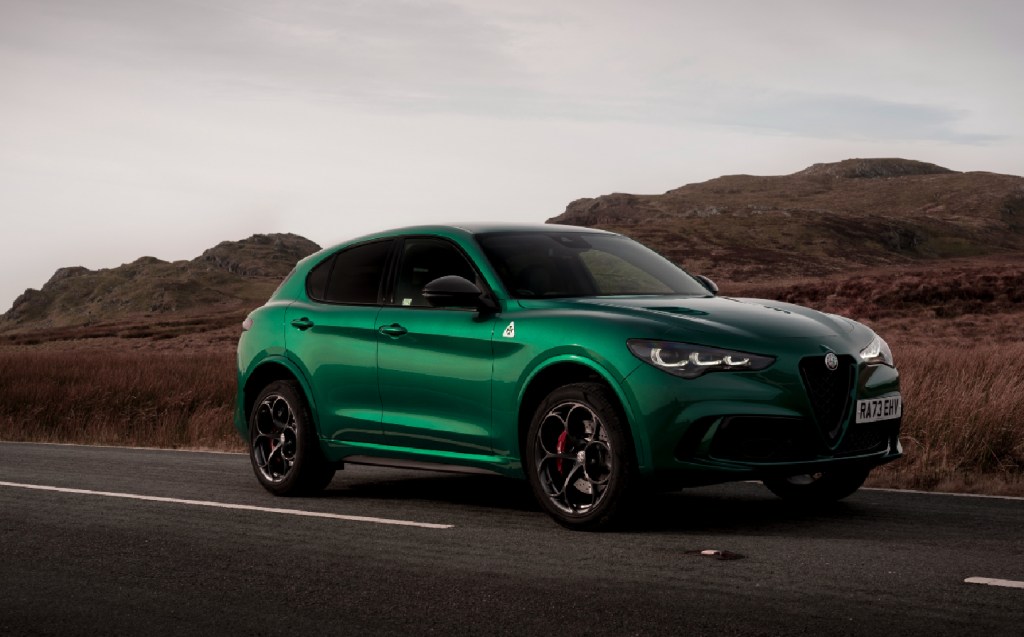
With Alfa Romeo going fully electric from 2027, in a way the updated Stelvio Quadifoglio feels like the tail end of a particular era and one of the very best of its petrol-powered breed. More importantly, it reasserts Alfa Romeo as a leading force in the performance car stakes and a match for rivals such as the BMW X3 M and Porsche Macan.
Related articles
- If you enjoyed this review of the Alfa Romeo Stelvio Quadifoglio, you might like to check out our review of the regular Alfa Romeo Stelvio 2023
- Also take a look at this story about Alfa Romeo’s plan for an electric sports car to succeed the 4C
- And don’t miss our Alfa Romeo Giulia 2023 review: is it more than just a pretty face?
Latest articles
- Seven great automotive events to visit this summer, from F1 to art and champagne
- Watch new Porsche 911 GT3 smash Nürburgring record for manual cars
- Skoda Elroq 2025 review: Czech carmaker can’t seem to miss with its electric family cars
- Five best electric cars to buy in 2025
- Should I buy a diesel car in 2025?
- F1 2025 calendar and race reports: The new Formula One season as it happens
- Zeekr 7X AWD 2025 review: A fast, spacious and high tech premium SUV — but someone call the chassis chief
- Denza Z9GT 2025 review: Flawed but sleek 1,062bhp shooting brake from BYD’s luxury arm
- Extended test: 2024 Renault Scenic E-Tech review


